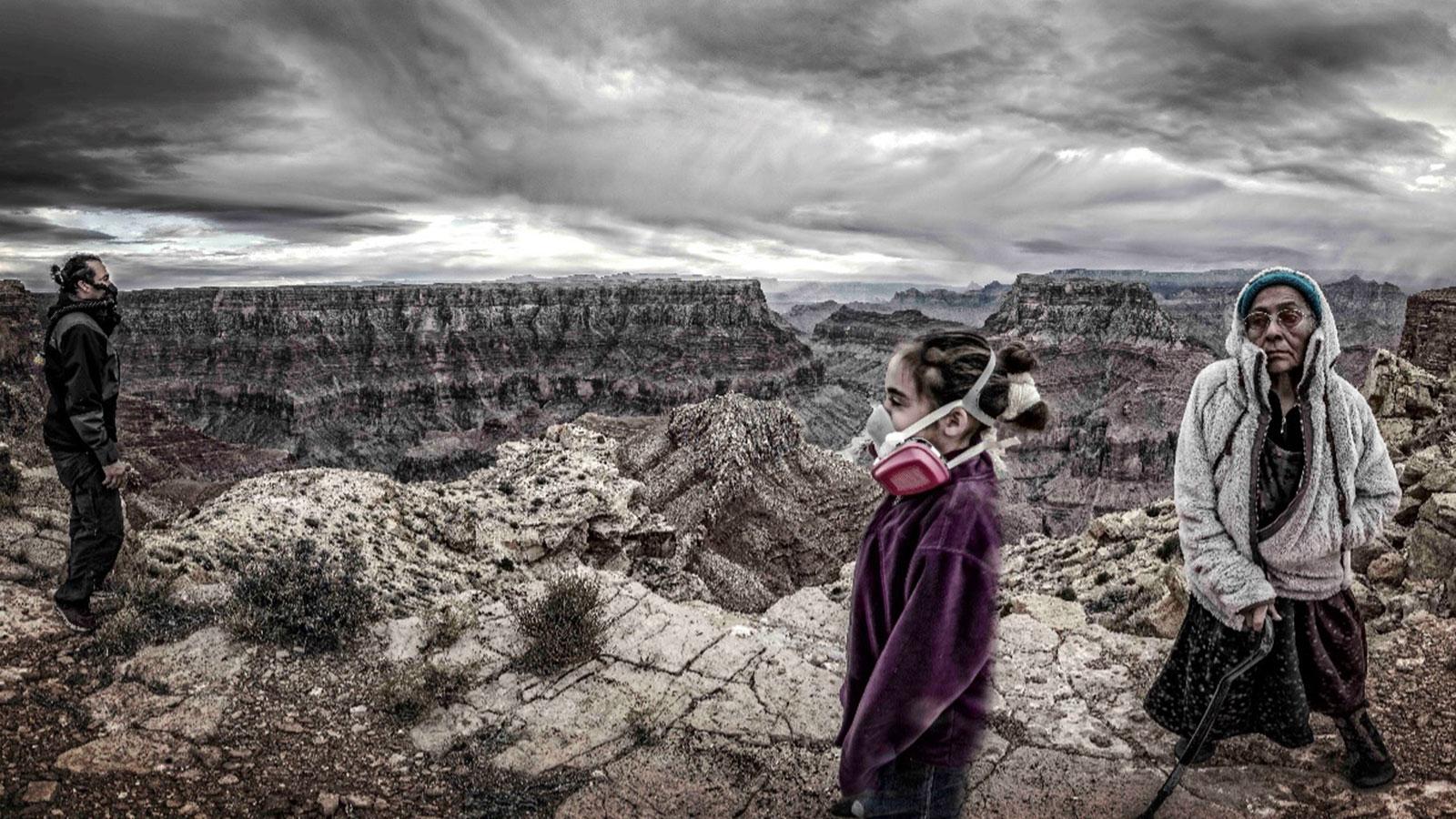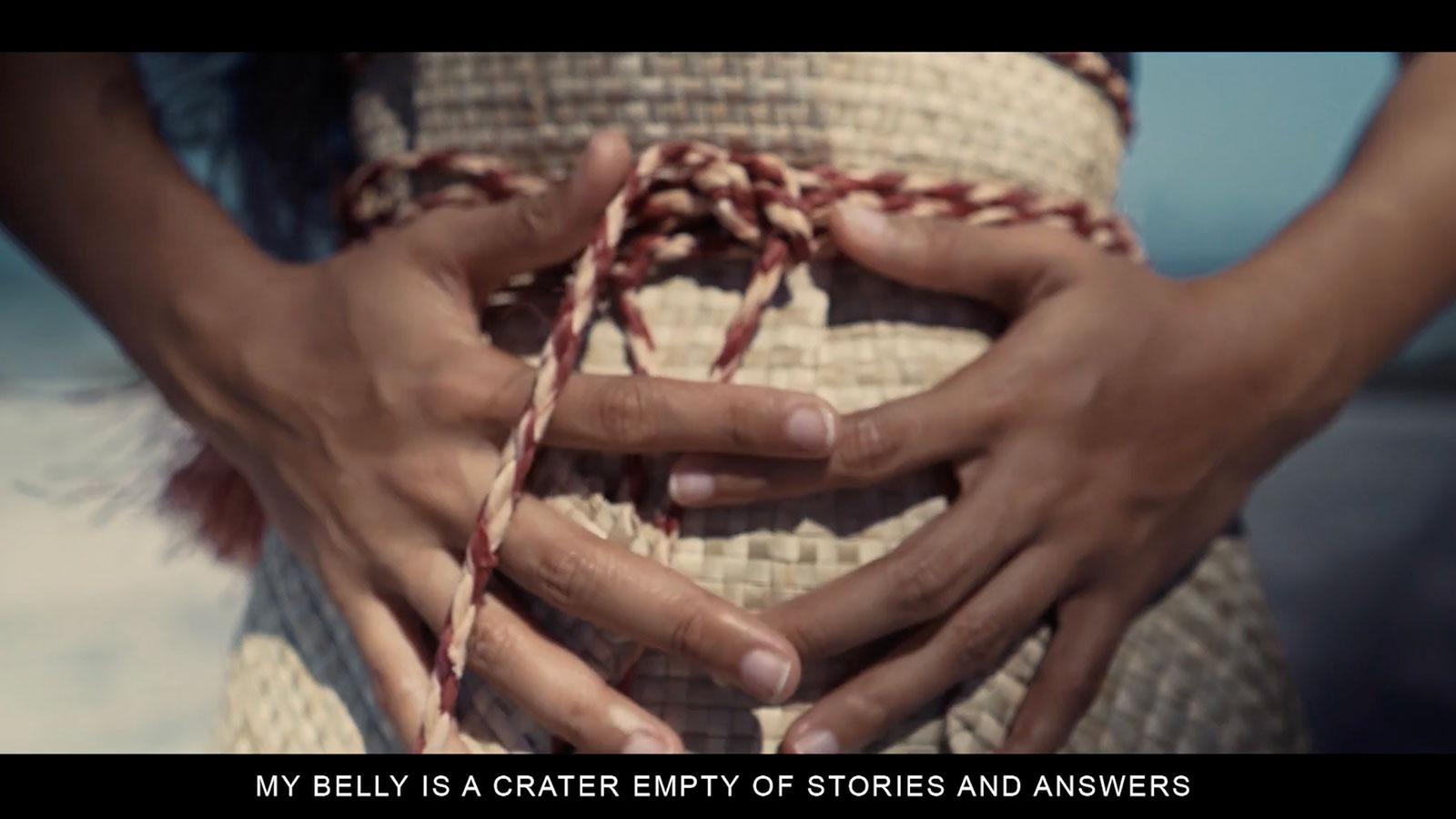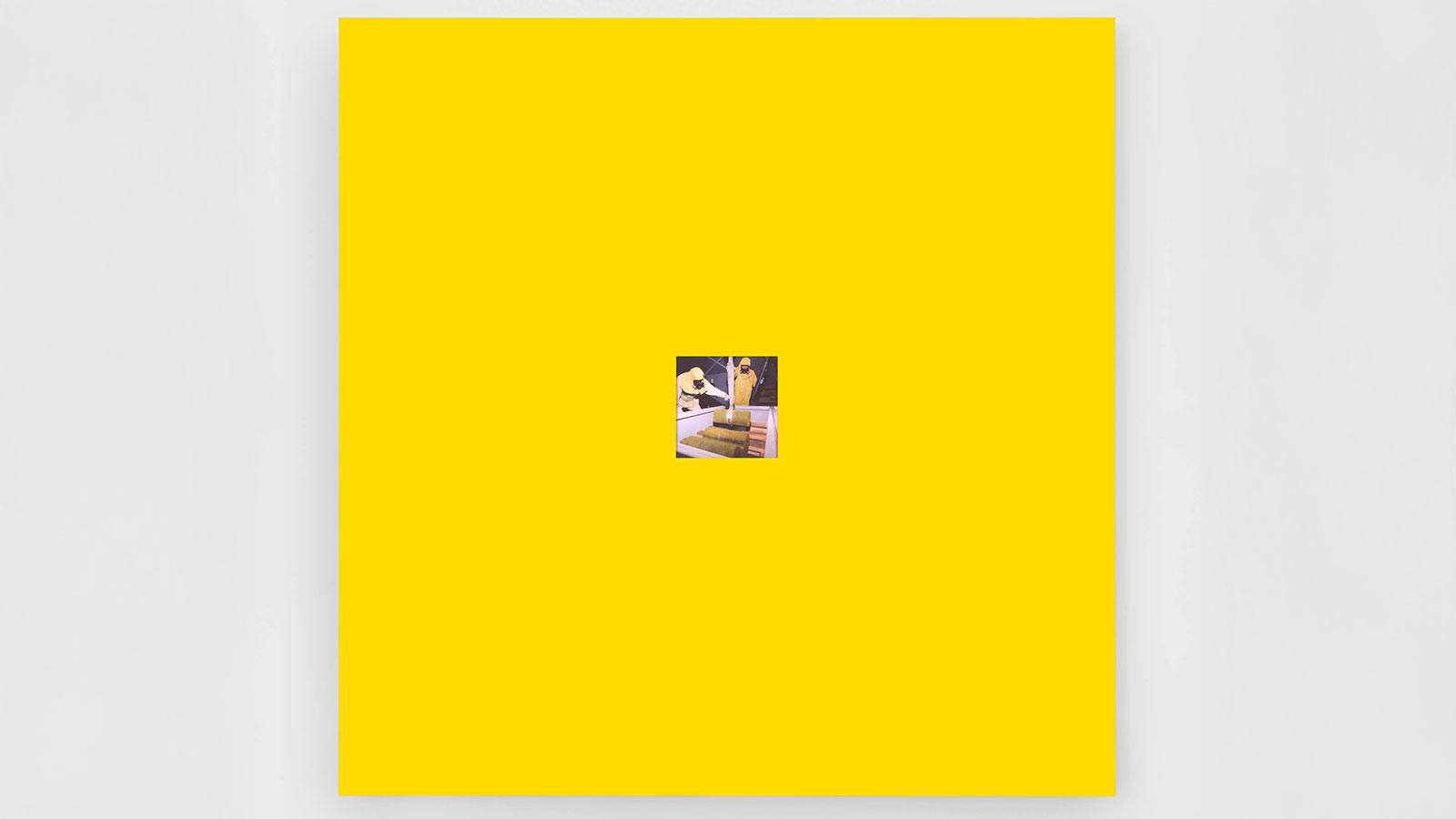
Nuclear Injustice Exhibition
On view November 15, 2025–January 31, 2026
The Pace University Art Gallery is pleased to present Nuclear Injustice, a group exhibition of work by Kathy Jetñil-Kijiner, Alan Nakagawa, Michael Wang, and Will Wilson that examines the lasting consequences of nuclear testing and bombings. The exhibition opens to the public on Saturday, November 15, with a free public reception and walkthrough on Tuesday, November 18, from 5:00 p.m. to 7:00 p.m.




Will Wilson, Auto Immune Response: Confluence of Three Generations, photography, 2015
Alan Nakagawa, Peace Resonance: Hiroshima/Wendover (watercolor detail), sound installation with video and watercolor, 2018–present
Kathy Jetñil-Kijiner, Annointed, video poem (still), 2018
Michael Wang, Yellow Painting (Ingots), powder-coated aluminum and pigment print, 36” x 36”, 2024
Through powerful artistic responses—including photography, sound installation, video poetry, and sculpture—the artists explore radioactive landscapes, Indigenous resistance to nuclear colonialism, and global movements advocating for a nuclear-free future.
Curated by Sarah Cunningham, professor of art and gallery director, and Joel Wilson ’27, the Amelia A. Gould Undergraduate Research Assistant in the Creative Arts, in collaboration with Emily Welty, PhD, chair of Peace and Justice Studies, the exhibition investigates the political, personal, and physical impacts of nuclear weaponry. It traces these effects from the poisoned soil and military sites of the Marshall Islands and the American Southwest to the soundscapes of Hiroshima and the lingering, often invisible infrastructures of energy and contamination that persist today.
“Nuclear weapons are not inevitable,” said Welty, who is also a member of the International Campaign to Abolish Nuclear Weapons (ICAN). “Like any oppressive social construction, they were created by human beings—and can be dismantled by human beings who are fueled by the courage and determination not to settle for a world with nuclear weapons.
The artists in the exhibition powerfully draw our attention to the aftereffects of the atomic era, transforming sites of devastation into spaces for remembrance, renewal, and resistance.
Marshallese poet and activist Kathy Jetñil-Kijiner presents video poems that reflect on the destructive impact of nuclear testing in the Marshall Islands and the deep interconnections between culture, memory, and place. Alan Nakagawa, a Los Angeles–based artist, uses field recordings from the Hiroshima Atomic Dome and the Wendover Hangar—from which the Enola Gay bomber departed—to create an immersive sound installation that transforms the reverberations of violence into a space for collective reflection. Will Wilson, a Diné photographer, contributes images which confront the ongoing environmental fallout of uranium mining on Indigenous lands, linking nuclear extraction to broader systems of colonial exploitation. Michael Wang, a conceptual artist based in New York, explores the scientific, moral, and ecological tensions of nuclear containment and exposure, situating these concerns within the lineage of land art.

The Nuclear Injustice exhibition is made possible by the New York State Council on the Arts with the support of the Office of the Governor and the New York State Legislature. Additional funding was received from the Mellon Foundation and the Center for Undergraduate Research at Pace University.
All the gallery’s exhibits and events are free and open to the public.
About the Artists
Kathy Jetñil-Kijiner is a Marshallese poet, filmmaker, and climate justice advocate whose work centers on the legacy of nuclear testing in the Marshall Islands. Her interdisciplinary practice brings together film-poetry, performance, and spoken word to shed light on cultural disruption, environmental injustice, and the resilience of Island communities. Her practice is informed by her ongoing community engagement through Jo-Jikum, the Marshall Islands–based nonprofit she co-founded in 2012 to support youth empowerment and environmental advocacy. In concert with her artistic and activist work, she is Climate Envoy for the Marshall Islands’ Ministry of Environment, completing her Ph.D. in Pacific Studies at the Australian National University and the author of Iep Jaltok: Poems from a Marshallese Daughter (university of Arizona Press, 2017).
Alan Nakagawa is a Los Angeles-based interdisciplinary artist with archiving tendencies, primarily working with sound, often incorporating various media and working with communities and their histories. He has created a series of Invisible Architecture experiences that are mash ups of the recorded acoustics of historical sites, giving new context to historic places through a contemporary lens of sound. Nakagawa is a recipient of two Art Matters grants, City of Los Angeles Artist Fellowship, California Community Foundation Mid-Career Artist Fellowship and a Monbusho Scholar. He co-founded arts collective non-profit Collage Ensemble Inc. (1984–2011), curated experimental music weekly Ear Meal Webcast (2010–2017), produced public practice artist interviews podcast VISITINGS Radio Show (2017–2020) and administers the website Asian American Futurism (2022–Present). His first book, A.I.R.Head: Anatomy of an Artist in Residence (Writ-Large Press, 2023) maps his artistic trajectory that led to nine artist-in-residencies in six years.
Michael Wang lives and works in New York. He uses systems that operate at both a local and global scale as media for art: climate change, species distribution, resource allocation, and the global economy. Select solo exhibitions include Bienvenu Steinberg & C, New York, NY (2024), Lake Tai, Prada Rong Zhai, Shanghai (2022); Extinct in New York, LMCC Arts Center, Governors Island, NY (2019). Selected group exhibitions include Meta City Biennale, Shanghai (2023); Solastalgia, Kalmar Art Museum, Sweden (2023); The 13th Shanghai Biennale, Shanghai (2021); Elevation 1049, 'Interstices,' Gstaad, Switzerland (2023); Vulnerable Critters, La Casa Encendida, Madrid (2022); Manifesta 12: The Planetary Garden, Palermo, Italy (2018); Parcours, Art Basel, Switzerland (2016). In 2017, he was a recipient of the Joan Mitchell Foundation Painters & Sculptors Grant.
Will Wilson is a Diné photographer and trans-customary artist who spent his formative years living on the Navajo Nation. His work is an allegorical investigation of the extraordinarily rapid transformation of Indigenous lifeways, the dis-ease it has caused, and strategies of response that enable cultural survival. Wilson studied photography, sculpture, and art history at the University of New Mexico (MFA) and Oberlin College (BA). Wilson has won the Native American Fine Art Fellowship from the Eiteljorg Museum (2007), the Joan Mitchell Foundation Award for Sculpture (2010), the Pollock-Krasner Foundation Grant for Photography (2016), the New Mexico Governor's Award for Excellence in the Arts (2017), and the Doran Artist in Residence at the Yale University Art Gallery (2020). His work is exhibited and collected internationally. Wilson has held visiting professorships at the Institute of American Indian Arts, Oberlin College, and the University of Arizona. He is currently an Associate Professor in the Department of Studio Art at the University of Texas at Austin.
